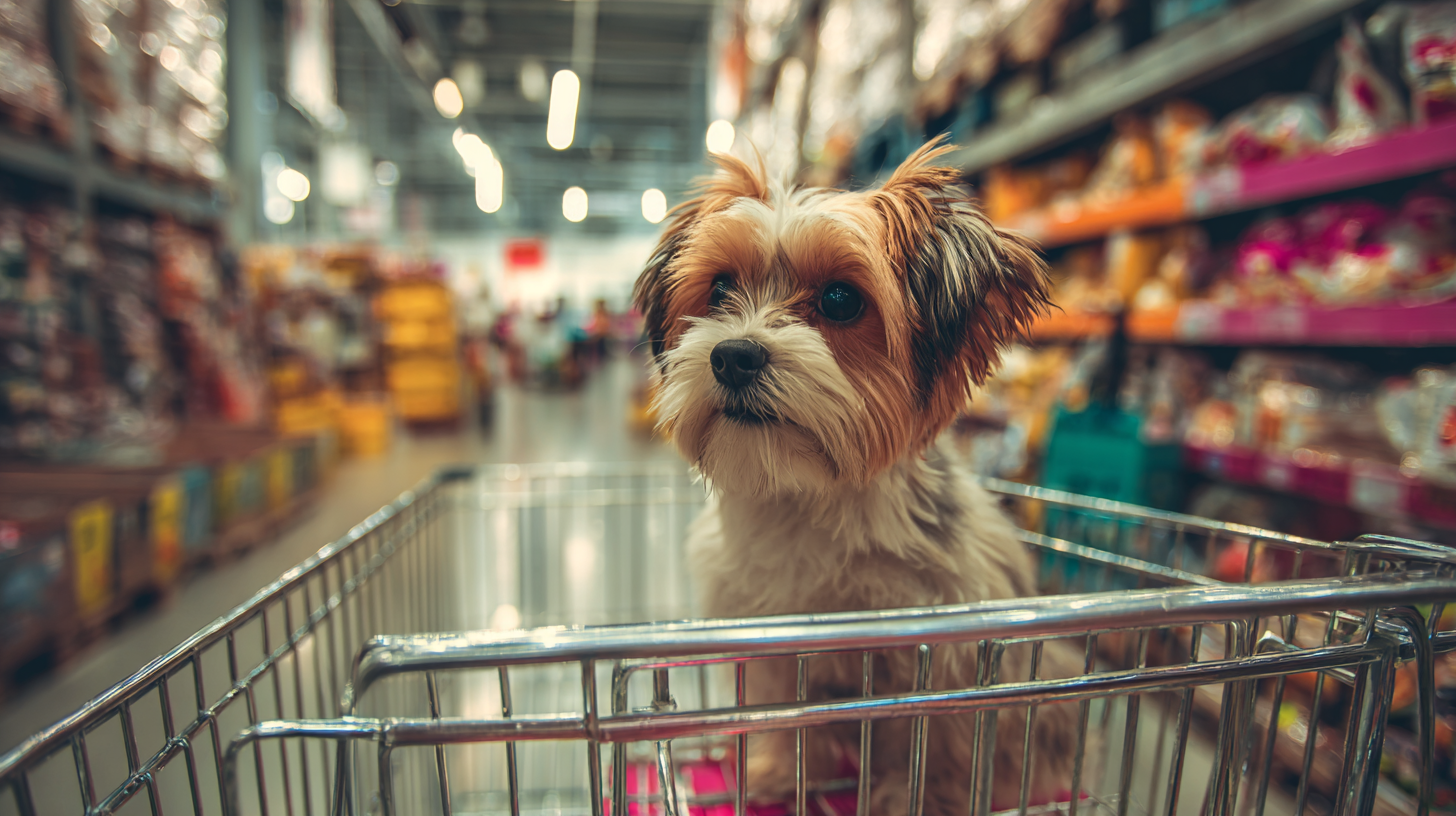Exploring Trends in Online Pet Retailers at the 138th Canton Fair China 2025
The 138th Canton Fair in China, set to showcase a plethora of innovative products and business opportunities, marks a significant moment for the rapidly evolving landscape of online pet retailers. As pet ownership continues to rise globally, so does the demand for diverse and quality pet products, leading to a surge in online shopping platforms tailored specifically for pet owners. This year's fair not only highlights the latest advancements in pet care products but also reflects shifting consumer preferences towards digital marketplaces. With the integration of technology and e-commerce, online pet retailers are poised to redefine how pet enthusiasts shop, making it an opportune moment for stakeholders to explore emerging trends, innovative solutions, and the evolving dynamics of the market. As we delve into this exciting landscape, we will shed light on key trends shaping the online pet retail sector and the implications for businesses and consumers alike in 2025 and beyond.

Emerging Technologies in Online Pet Retailing at the 138th Canton Fair
At the 138th Canton Fair in 2025, emerging technologies are set to revolutionize the landscape of online pet retailing. With the global pet care market projected to reach $202.6 billion by 2025, as per data from Grand View Research, retailers are increasingly leveraging innovative solutions to meet growing consumer demands. The integration of artificial intelligence (AI) and data analytics allows retailers to personalize shopping experiences, offering tailored product recommendations based on individual pet needs and behaviors. This trend is crucial as 70% of millennials are now pet owners, according to the American Pet Products Association, indicating a shift towards a more digital and informed purchasing process.
Furthermore, augmented reality (AR) is on the rise in online pet retail. AR applications enable customers to visualize products in their own homes before making a purchase, enhancing customer engagement and satisfaction. A report from Allied Market Research suggests that the AR market for retail alone is expected to grow to $1.6 billion by 2024. As online pet retailers grow more adept at utilizing such technologies, they not only streamline their operations but also foster deep connections with tech-savvy pet owners, positioning themselves for competitive advantage in an increasingly digital marketplace.

Sustainable Practices Adopted by Pet Retailers in China
At the 138th Canton Fair in China, a growing emphasis on sustainable practices among online pet retailers is evident. As the pet industry in China continues to expand, market analysts project that it will reach $30 billion by 2025, driven by increasing pet ownership and consumer awareness regarding environmental impact. Retailers are now prioritizing eco-friendly products and packaging, enhancing their appeal to a more conscientious consumer base.
 One significant trend is the use of biodegradable materials for pet products. According to a recent report by Euromonitor International, over 60% of pet owners are willing to pay more for environmentally friendly products. Retailers are responding by sourcing sustainable ingredients and utilizing recyclable packaging solutions, which not only reduce waste but also align with global sustainability goals. This aligns with the rising demand for responsible consumerism in the pet sector.
One significant trend is the use of biodegradable materials for pet products. According to a recent report by Euromonitor International, over 60% of pet owners are willing to pay more for environmentally friendly products. Retailers are responding by sourcing sustainable ingredients and utilizing recyclable packaging solutions, which not only reduce waste but also align with global sustainability goals. This aligns with the rising demand for responsible consumerism in the pet sector.
Tips for pet retailers looking to adopt sustainable practices include conducting sustainability assessments of their supply chains and collaborating with suppliers who focus on eco-friendly production. Additionally, implementing a take-back program for used products can incentivize customers to return items for recycling, fostering a culture of sustainability within the pet retail landscape. These strategies not only benefit the environment but can also enhance brand loyalty and attract a growing segment of eco-conscious consumers.
Consumer Behavior Trends in Pet Product Purchases during the Fair
The 138th Canton Fair in China 2025 has become a pivotal platform for online pet retailers to showcase their offerings and engage with a diverse audience. Notably, consumer behavior trends during the fair reveal a transformative shift in how pet owners approach purchasing decisions. Increasingly, pet product buyers are prioritizing quality and sustainability, seeking items that reflect their values while ensuring the well-being of their pets. Products that boast environmentally friendly materials and innovative designs are gaining traction, pointing to a more informed consumer base.
Moreover, the convenience of online shopping has altered purchasing patterns, with many attendees favoring digital transactions over traditional methods. Real-time promotions and interactive experiences during the fair enhance the buying process, allowing consumers to make quick decisions based on immediate feedback and peer recommendations. The data indicates that personalized marketing strategies are essential, as buyers respond positively to targeted ads that align with their individual preferences and needs. This trend highlights the importance of adapting to consumer demands in an ever-evolving marketplace, emphasizing the role of technology in shaping the future of pet retail.
Innovative Marketing Strategies of Online Pet Retailers at the Event
At the 138th Canton Fair in 2025, online pet retailers are set to unveil a plethora of innovative marketing strategies designed to capture the attention of pet owners and enhance consumer engagement. According to a report from Pet Market Insights, the global pet retail market is projected to reach $300 billion by 2025, with a significant portion of this growth spurred by e-commerce operations. Retailers are leveraging social media platforms and targeted digital advertising to reach younger demographics, who are increasingly prioritizing pet products that align with their lifestyles.
One notable trend is the use of interactive content, such as virtual pet care workshops and live-streamed Q&A sessions, which have proven effective in building community and trust within the pet-owning audience. Data from Statista reveals that 70% of pet owners are more likely to engage with brands that offer personalized experiences and informative content. Additionally, the integration of AI-driven analytics allows online retailers to tailor their marketing campaigns to specific consumer preferences, ultimately driving sales and enhancing brand loyalty among pet enthusiasts attending the Canton Fair.
Comparative Analysis of Traditional vs. Online Pet Retail Models showcased
At the 138th Canton Fair in China, the showcasing of both traditional and online pet retail models brought to light the evolving landscape of the pet industry. Traditional pet retailers often rely on physical storefronts, creating an intimate shopping experience with personalized customer service. Customers can interact with products directly and receive expert advice from staff, fostering loyalty and community engagement. However, this model faces challenges, mainly due to increased operational costs and competition with the growing online market.
Conversely, online pet retail models have surged in popularity, capitalizing on convenience and a broader reach. E-commerce platforms offer extensive selections, competitive pricing, and the comfort of shopping from home. Pet owners can easily access product reviews and compare prices at their leisure. However, the lack of personal interaction can be a disadvantage, as customers miss out on tailored recommendations and immediate support. The comparative analysis of these models at the Canton Fair highlights not only their unique strengths and weaknesses but also the essential need for retailers to innovate and adapt in an increasingly digital marketplace.
Related Posts
-

Top 10 Online Pet Supply Manufacturers from China at the 137th Canton Fair
-

How to Choose the Best Online Pet Retailers for Your Furry Friends
-

5 Reasons Online Pet Retailers Are Revolutionizing Pet Ownership
-

How to Choose the Best Fish Pet Supply for Your Aquatic Companions
-

What is the Ultimate Guide to the Best Fish Aquarium Products for Global Buyers
-

Innovative Options in New Pet Products for Modern Pet Owners
Copyright © 2021 Payless Pet Products - All Rights Reserved.